Nicodemus: Seventh Sunday of Lent
Debre Zeit: the 5th Sunday of the Great Lent
The signs of the end times spoken by our Lord will culminate in final judgment and resurrection of the living and dead, believers and unbelievers, righteous and sinners. It is in the knowledge of this truth of the second coming of Christ that all people must repent, believe and baptize in preparation for the arrival of God’ Kingdom.
The church advises us to be spiritually prepared for judgment at any moment and to put our trust in God that He will make everything right in the end. The final phase of the process of redemption began with the first coming of Jesus and will culminate in the events surrounding His Second Coming. There will be a final judgment of all people, living and dead. There will be a final defeat and destruction of all evil — Satan, sin, suffering and death. The kingdom of God will come to its fulfillment at last.
Signs of the end
Jesus, Himself, said no one would be able to predict exactly the end of the time but He informs that many events will occur before the Second Coming and which will be signs that the end is near. There will be wars, famines, earthquakes, false prophets, persecutions and an increase in wickedness, rebellion against God, worship of demons, idolatry, murders, sorceries, sexual immorality, and thefts. (Matthew 24:3-14; Rev. 9: 20). The Gospel of the kingdom must be preached to all nations for a witness to all the nations, and then the end shall come. (Matthew 24:14-28).
Resurrection and Final Judgment
Everyone who has ever lived will be brought back to life in some form to face the final judgment along with those still living. When the end time comes, all who are in the graves will hear His voice and come forth and can be in front of two different Judgment Seats (righteous in the right hand of Jesus and sinners in the left) — those who have done good will be granted eternal life; and those who have done evil, will be condemned to eternal punishment. (Matthew 5:29-30, 25:31-46, Mark 9:43-48 ; John 5:25-29)
While we are still living, or until Jesus comes again, we have every opportunity to repent. We can change our ways from evil to good. But in the end we will all be judged. No one knows about that day or hour, not even the angels in heaven, nor the Son, but only the Father. You do not know when that time will come. The event, when it happens, will be swift and unexpected. So you also must be ready, because the Son of Man will come at an hour when you do not expect Him. (Mark 13:32-33; Matthew 24:43-44)
Be alert! Be Prepared!
The Covenant of St. Mary (Kidane Mihret)

Likewise, one who implores by invoking their names, commemorates them and believes in their role of intercession shall be rewarded as has been confirmed by God.Our Lord says in the Gospel of Mathew 10:41-42 “that if any one receives a prophet in the name of a prophet shall receive a prophet’s reward; and he receives a righteous man in the name of a righteous man shall receive a righteous man’s reward. And whosoever shall give to drink unto one of these little ones cup of cold water only in the name of a disciple; verily I say unto you, he shall in nowise lose his reward.”
Saints intercede not only in the realms of the flesh as the scriptures testify for they are alive in soul. (Ex.32:2-15; Enoch 12:33-40, Luke 20:37-40). The word of God is living, and it works on the living. His covenant never changes and He Himself has said that saints are also living.
The church believes in the covenant and honor bestowed on holy Apostles, martyrs and the righteous. Covenant has been given to them that those who forsook all and followed him by carrying his cross and received hardship for the name and glory of Christ shall sit upon the twelve thrones judging the twelve tribes of Israel when the son of man sits on his glorious throne. (Matt. 19:28)
If the Lord said this about the apostles, then how much more effective would be the prayers of the Mother of God for the salvation of her children? We have seen St. Mary receiving the motherhood of the Incarnate Son of God. This motherhood is not merely an honorable title but a responsibility of unceasing work. Being a superior member of the body of our Lord Jesus Christ, she responds to the need of the other members seeking the salvation of everyone.
The story of the wedding of Cana of Galilee shows how great the intercession of Virgin Mary is. When St. Mary saw that the wine at the wedding had run out, she informed her Son, “they have no wine” (Jn 2:3). Of course the Lord was aware of that and surely he does not need to be reminded with the need of his children. But He who is full of love is pleased to see the mutual feeling of love in His mother and His children.
Her request was only made once, which shows clearly her confidence in Her Son’s reply, for she did not repeat her request but with every assurance she said to the people, “Whatever He says to you, do it.” (Jn 2:5) Through her conversation with the people of the wedding, we can visualize her role in intercession. For she presents our needs to her Son and then directs our hearts to diligently carry out His comandments and to do whatever He tells us.
Accordingly, the Ethiopian Orthodox Tewahido Church commemorates the covenant of St. Mary by the name Kidane Mehret.
Kidane Mihret (ኪዳነ ምሕረት) is a Ge’ez phrase which literally means ‘covenant of mercy’. The phrase is used to refer to God’s promise to St. Mary that he would forgive the sins of those who seek her intercession – a fact that underscores the enormous grace of Our Lady before the Almighty. Kidane Mihret also refers to Yekatit 16 (February 23), the day on which St. Mary received the promise.It is also observed on the 16th day of each month though not as colorfully as on February 23. The day marks one of the 33 feasts of St.Mary.
According to the Ethiopic Synaxarium (pp.365), God has promised St. Mary that he will bless those who celebrate her commemoration, call upon her name, or give alms to the poor even if it were only a cup of cold water. He also promised to bless those who build churches in her name, give cloth to the poor; those who visit the sick, feed the hungry, comfort the grieving, or write the history of her strife.
May her prayer and intercession be with us!!!
Source:
• The Ethiopian Orthodox Tewahido Church Faith, Order of Worship and Ecumenical Relations (1996: 60-62).
• The book of the saints of the Ethiopian Orthodox Tewahido Church (Synaxarium).
The Presentation of Jesus at the Temple
February 15, 2017
By Kassa Nigus
The Ethiopian Orthodox Tewahido Church celebrates the entrance of Our Lord Jesus Christ into the Temple on Yekatit 8 (February 15) carried by His mother, Saint Mary. The Ethiopian Church calls the feast, ‘Lidete Semon’ to remember the anticipation of Semon with the Holy family at the Temple.
The event is described in the Gospel of Luke (Luke 2:22–40). St. Mary and Joseph took the baby Jesus to the Temple in Jerusalem forty days after His birth to complete the ritual purification after childbirth, and to perform the redemption of the firstborn son, in obedience to the Law of Moses (Leviticus 12, Exodus 13:12–15, etc.).
Saint Mary and Saint Joseph kept this law, even though, St.Mary would not have had to go through ritual purification since she remained a virgin after the birth of Christ. They did this to fulfill the customs of their nation as Jews. This was according to the law which God had given to Israel, and Jesus also abided by that very rule. Luke explicitly says that St Joseph and St Mary took the option for poor people offering "a pair of turtledoves, or two young pigeons" as they couldn’t afford a lamb. (Leviticus 12:1–4)
Upon bringing Jesus into the temple, they encountered Simeon, an old man who had been promised that "he should not see death before he had seen the Lord’s Christ" (Luke 2:26). According to church manuscripts, Simeon was one of the 70 scholars who were chosen by a king called Betlimos (Ptolemy II ) to translate and interpret the book of the prophets from Hebrew to Greek (Tsir’e). The translation of the Hebrew Bible into the Greek language is known as the Septuagint (the LXX). The name “Septuagint” comes from the Latin word for seventy.
Simeon was in charge of translating the book of Isaiah. As he reached the sentence that read, “behold the Virgin becomes pregnant and gives birth” (Isa. 7:14), he was confused by the discrepancy as women cannot be virgin and pregnant at the same time except St Mary.
As he feared that a direct translation of the text will cast a shadow of doubt over his translation skills and he could face punishment due to that, he replaced the word ‘virgin’ with ‘woman’. But after a while he witnessed a miracle: the word ‘woman’ was replaced by ‘virgin’. He erased that and wrote ‘woman’ instead of ‘virgin’. But the word was erased again miraculously. Then an angel came to him, told him not to erase the word ‘virgin’ and said, “you shall not see death before you see the Lord’s Christ (whom the Virgin gave birth to)" (Luke 2:26).
Simeon lived for 500 years was bed ridden. But when he met the Holy Family at the temple and carried the Child Jesus Christ, he regained his strength and was full of energy like a young man. That is why the Ethiopian Orthodox Church celebrates the day and named it ‘Lidete Simeon’ (Birth of Simeon).
At that time, Simeon offered a prayer which came to be known as the prayer of Simeon, or Canticle of Simeon, which prophesied the redemption of the world by Jesus: “Lord, now lettest Thou Thy servant departs in peace; according to Thy word: for mine eyes have seen Thy salvation, which Thou hast prepared before the face of all people: to be a light to lighten the gentiles and to be the glory of Thy people Israel.” (Luke 2:29–32).
Simeon then said to Mary: "Behold, this child is set for the falling and the rising of many in Israel, and for a sign which is spoken against. Yes, a sword will pierce through your own soul, that the thoughts of many hearts may be revealed" (Luke 2:34–35).
Source:
• ወንጌል ቅዱስ ዘእግዚእነ ወመድኃኒነ ኤየሱስ ክርስቶስ ዘዜነዉ ማቴዎስ ወማርቆስ ሉቃስ ወዮሐንስ::( The four Gospels commentary), written and interpreted by Ethiopian Orthodox Tewahido Church scholars, 19 88 Eth.Ca, pp. 382.
• Ethiopic Synaxarium on February 16.
The Fast of Nineveh
The dates of this fast vary every year according to the date of Easter. It rotates within 35 days of variance between Tir 17 (January 25) of lower limit and Yekatit 21 (February 29) of upper limit). The Fast of Nineveh is ritualistically similar to the Fast of the Great Lent. As with all other fasts of the Holy church, the fast of Nineveh is observed by refraining from the intake of all dairy and meat products.
During this fast, we remember the three days Prophet Jonah spent in the belly of a large fish as penance for his disobedience to God and the atonement of the sinful city of Nineveh. This fast teaches us how a sinner can inherit the kingdom of God through repentance and realized God’s love and concern not just for His own people.
During these three days, we should look at our lives and show remorse for our disobedient natures and follow in the footsteps of Prophet Jonah and the people of Nineveh. This fast is about getting rid of our bad habits, just like the mariners threw most of their cargo that was in the ship into the sea, to lighten the load and to make the ship sail safe. This fast is about to cast off our worldly desires and cultivating virtues. Just as the captain awakened Jonah from his sleep, let us also awaken ourselves from spiritual sleep and call upon God during this three-day Fast.
Note: As the fast of Nineveh is the herald of the Great Lent, the Great Lent (55 days of fast) will begin on Monday, February 21.
The Commemoration of the Death of St. Mary (Astereyo Mariam)
“… Behold, from henceforth all generations shall call me blessed. For He that is mighty hath done to me great things;” (Luke 1:48-49)
January 30, 2017
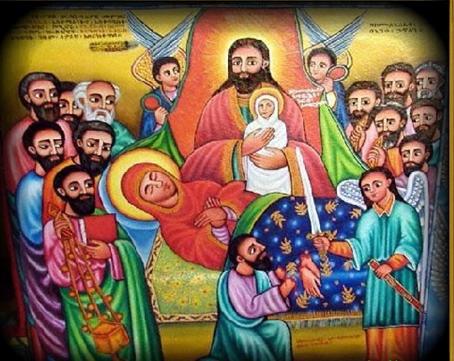
The Ethiopian Orthodox Tewahido church commemorates the death of St. Mary on Tir 21 (January 29). The day is known as ‘Aster’eyo’ to mean appearance/Epiphany. It is one of the most colorful festivals of St Mary
celebrated across Ethiopia. It coincides with the season the church devoted to celebrate the different manifestations of Christ’s glory and Divinity, especially the Nativity, the Baptism as well as the miracle at Cana.
The term ‘Aster’eyo’ is more related to the commemoration of the death of St. Mary in view of the fact that God came with thousands of His angles to comfort her, as is recorded in the Synaxarium.
The years of St. Mary’s life on earth were 64 years. She grew up in her parents’ house and lived there for 3 years and 7 months. She was then given to the priests in the temple to grow there serving in God’s house. She left the temple when she reached the age of 15. She spent 34 years and three months in Joseph’s house until the Ascension of the Lord, and spent the rest of her life (i.e. 14 years) with St. John the Evangelist, according to what the Lord said when He was on the cross: "Behold, this is your son," and to St. John, "Behold, this is your mother."
Her intercession and blessings be with us. Amen.
Source: Synaxarium – The Book of the Saints of the Ethiopian Orthodox Tewahedo Church.
The Festival of Timket
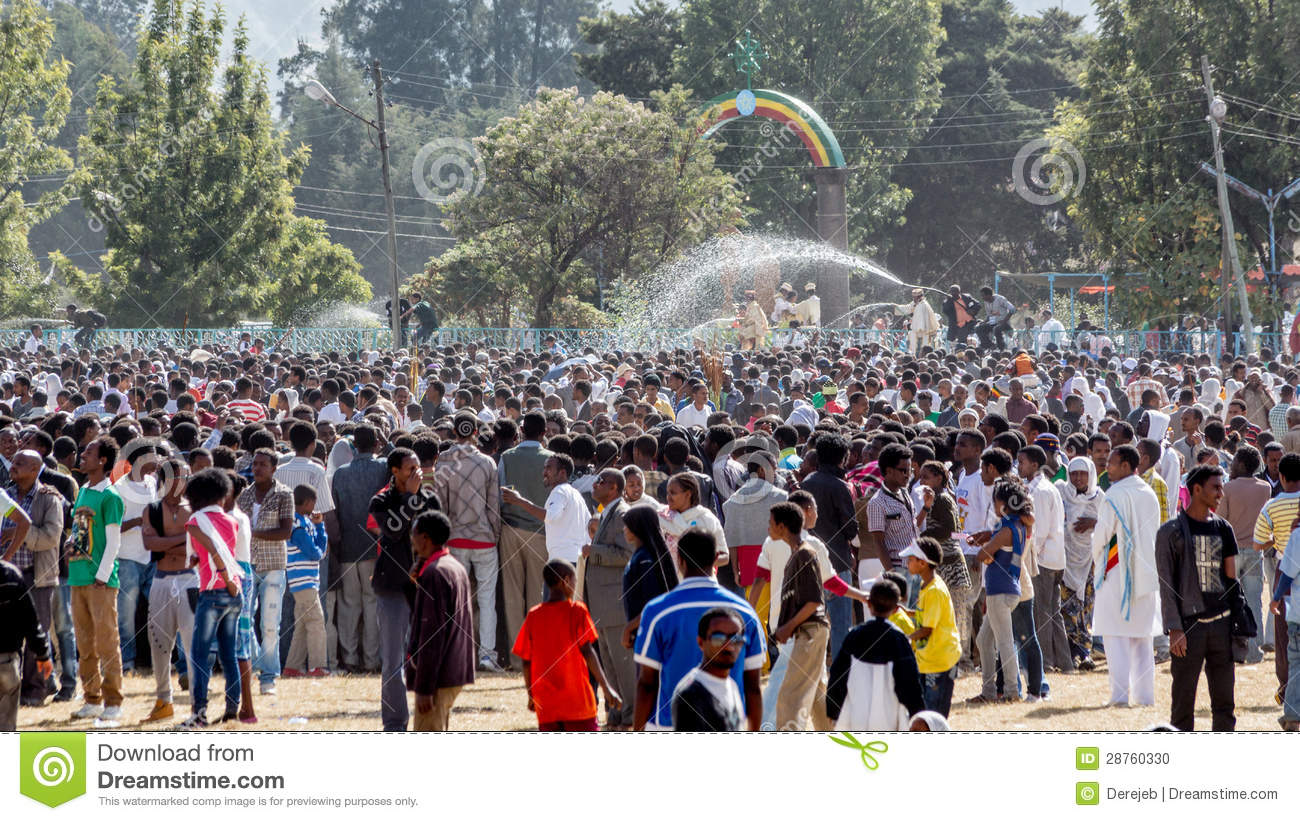
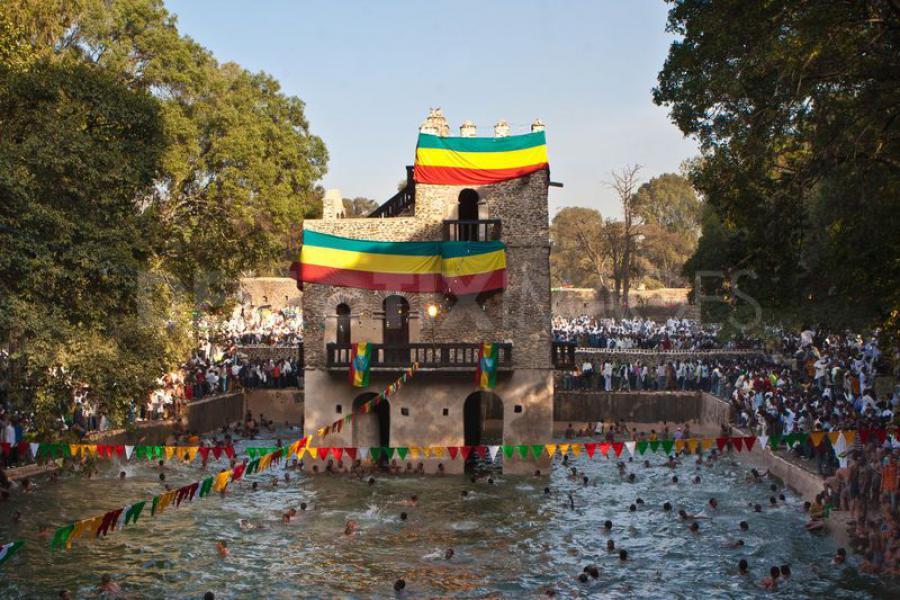
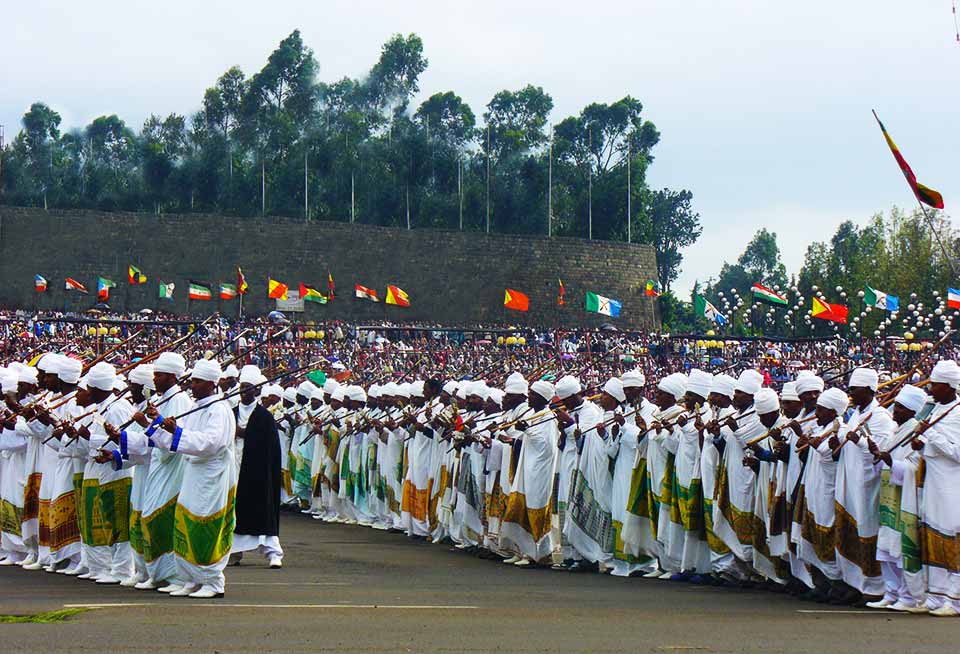
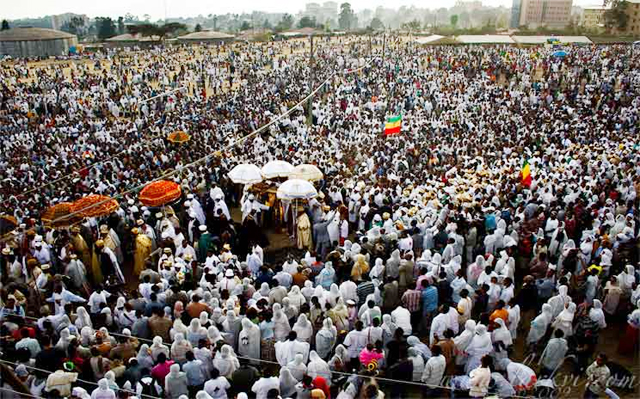
Circumcision of Jesus Christ (Gezret)
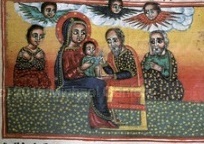
Jesus was circumcised eight days after His birth in keeping with the Old Testament law which holds that males should be circumcised eight days after birth on which they are also given their names. (Luke 2:21)
In the Old Testament, circumcision was a sign of the covenant made between God and Abraham’s offspring of promise. It represented a symbol which set apart those who believed in God from those who didn’t. (Leviticus 12:3) Isaac, the only son of Abraham chosen by God to be the heir of the covenant, was circumcised on the eighth day according to God’s order. From that time circumcision became a most important rite during the Old Testament.
In the New Testament, circumcision has been replaced by baptism which came to symbolize entry into the new covenant and becoming an heir to God’s eternal promises. Our Lord Jesus Christ was taken to the temple eight days after His birth because He came to accomplish the law of prophets and Torahs. (Mathew 5:17, Luke 2:21) He was named Jesus, the name the angel had given Him before He had been conceived.
According to a tradition in the Ethiopian church, when the man who carried out circumcisions approached Jesus, his knife almost melted down and so he was afraid. Then Jesus opened His mouth and said, “My blood shall not be shed on earth except on [Good] Friday”. Later Jesus was found circumcised Divinely.
Source:
• Ethiopic Synaxarium,on January 14.
• Hiruy Ermias 2006E.C, Mezgebe Tarik part 2, pp.141.
The Feast of Archangel Gabriel
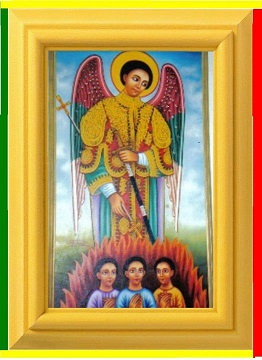 According to his homily, St Gabriel is one of the archangels who strongly contended for the honor and wisdom of God when the fraud angle wished to be the highest in heaven, even above God. During that time of mystification, St. Gabriel heartened his fellow angles saying, "we shall persist till we realize our Creator”.
According to his homily, St Gabriel is one of the archangels who strongly contended for the honor and wisdom of God when the fraud angle wished to be the highest in heaven, even above God. During that time of mystification, St. Gabriel heartened his fellow angles saying, "we shall persist till we realize our Creator”. St Gabriel is also the angel who announced to Zacharias the priest that his sterile wife will give birth to a son who will be called John (Luke 1:13). He mentioned some prophecies about that son, which shows that angels are capable of knowing what will happen in the future as revealed to them by God. Gabriel is also the one who was sent to the Holy Virgin and said to her, "The Holy Spirit will come upon you, and the power of the Highest will overshadow you; therefore also, that Holy One who is to be born will be called the Son of God" (Luke 1:35).
Gabriel also clarifies visions when ordered by God. This appears in the vision of the prophet Daniel. When Daniel was perplexed with the vision, the Lord sent Gabriel to clarify the meaning of the vision to Daniel. (Dan. 8:16) In the subsequent chapter, the angel said, “O Daniel, I now come forth to give you skill and understanding.” (Dan.9: 22)
Tahisas 19 (December 27) is dedicated to commemorate the deliverance of the three youths (Sidraq, Misaq and Abdenago) from the burning fire of Nebuchadnezzar through the help of St Gabriel (Daniel 3).
